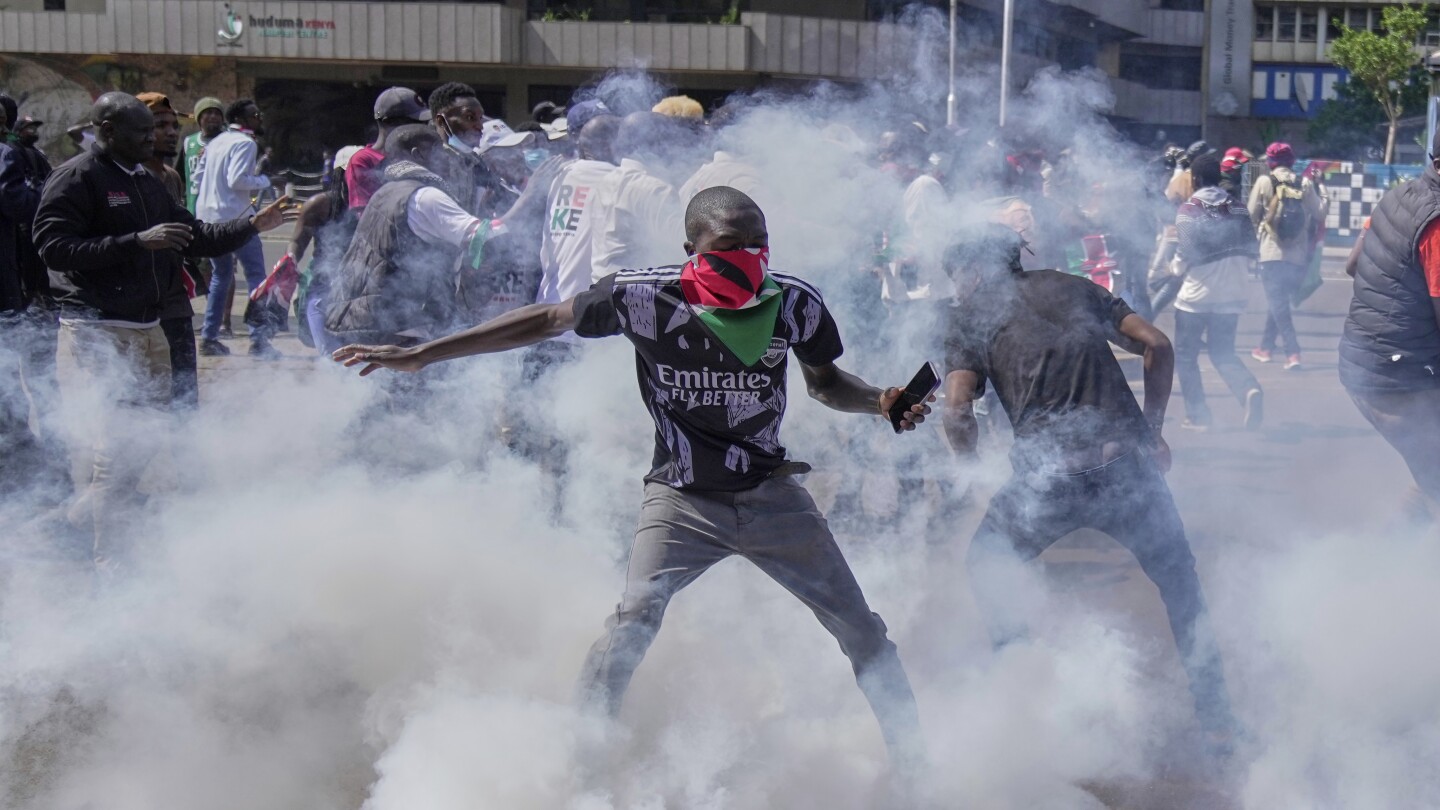Kenya is currently grappling with widespread protests as thousands of demonstrators take to the streets to voice their anger against police brutality, government corruption, and the rising cost of living. These protests, largely driven by young Kenyans, mark the one-year anniversary of the deadly anti-tax demonstrations where scores were killed or went missing. The current unrest reflects deep-seated frustrations with the current administration and a growing demand for accountability and change.
The protests, which have spread to major cities, have evolved into broader calls for President Ruto’s resignation, highlighting widespread discontent over alleged poor governance. This article delves into the key issues fueling the protests, the government’s response, and the potential implications for Kenya’s political landscape.
Police Brutality: A Spark for Unrest
One of the primary drivers behind the current wave of protests in Kenya is the persistent issue of police brutality. Incidents of excessive force, unlawful arrests, and even extrajudicial killings have fueled public anger and distrust towards law enforcement agencies. The recent death of a blogger in police custody, coupled with the close-range shooting of a civilian during protests, have further inflamed tensions.
According to Wangechi Kahuria, the executive director for the Independent Medico-Legal Unit, Kenyans should be “allowed to mourn and go back home,” indicating the deep sense of grief and injustice felt by many. The demand for police accountability and reforms remains a central theme of the protests.
Government Corruption: A Deep-Seated Grievance
Corruption within the government remains a significant concern for Kenyans, eroding public trust and hindering development. Protesters accuse government officials of embezzlement, bribery, and abuse of power, leading to a call for greater transparency and accountability. The perception that corruption is rampant has fueled the demand for systemic change and a more ethical government.
The protesters believe that the government is not working in their best interests and that corruption is a major obstacle to progress. They are demanding that those in power be held accountable for their actions and that measures be put in place to prevent future corruption.
Economic Hardship: Rising Cost of Living
The rising cost of living is another major factor driving the protests in Kenya. Many Kenyans are struggling to afford basic necessities such as food, housing, and transportation. The government’s economic policies, including the introduction of new taxes, have been criticized for exacerbating the financial burden on ordinary citizens.
The protesters are demanding that the government take steps to address the rising cost of living and provide relief to struggling families. They are also calling for policies that promote economic growth and create jobs for young people.The economic hardship faced by many Kenyans has added to the sense of frustration and anger towards the government.
Government Response: A Contentious Approach
The Kenyan government’s response to the protests has been a subject of much debate. While authorities have maintained that they are committed to upholding law and order, critics accuse them of using excessive force and suppressing dissent. The deployment of anti-riot police, the use of tear gas, and the arrests of protesters have drawn condemnation from human rights organizations and civil society groups.
Despite the government spokesperson, Isaac Mwaura, declaring that Wednesday would be a “normal working day” and that no protests would be allowed, the demonstrations proceeded. This led to clashes between protesters and police, resulting in injuries and further escalation of tensions.
Political Landscape: Dissolved Cabinet and Political Pacts
The political landscape in Kenya has seen significant shifts in recent years. During last year’s protests, President Ruto dissolved the Cabinet that had been accused of incompetence and corruption but maintained most of his previous ministers in his new Cabinet despite concerns.
Additionally, President Ruto appointed opposition party members to the Cabinet last year and in March he signed a political pact with his election rival, opposition leader Raila Odinga. These moves reflect the evolving dynamics of Kenyan politics and the ongoing efforts to address the country’s challenges.
Media Portrayal: “A Luta Continua”
Local media in Kenya have played a crucial role in highlighting the protests and the underlying issues. On Wednesday, major newspapers published the names and photos of some of those who died during last year’s protests. The headline in The Standard, read “A luta Continua,” which means “The struggle continues” in Portuguese, symbolizing the ongoing fight for justice and change.
Political analyst Herman Manyora has described the protesters as “heroes” who paid the ultimate price and should be remembered. He urged authorities to work with demonstrators to ensure a good commemoration, while also warning that the protesters remain unhappy because the government has been intransigent.
Conclusion: A Nation at a Crossroads
The protests in Kenya reflect a nation at a crossroads. The combination of police brutality, government corruption, and economic hardship has created a volatile situation that demands urgent attention. The government must address the root causes of the unrest and engage in meaningful dialogue with protesters to find a path forward.
The future of Kenya hinges on the ability of its leaders to address the grievances of its citizens and create a more just, equitable, and prosperous society. The ongoing protests serve as a reminder that the struggle for a better Kenya continues. It remains to be seen whether the government will heed the calls for change and take the necessary steps to address the challenges facing the nation.

Leave a Reply